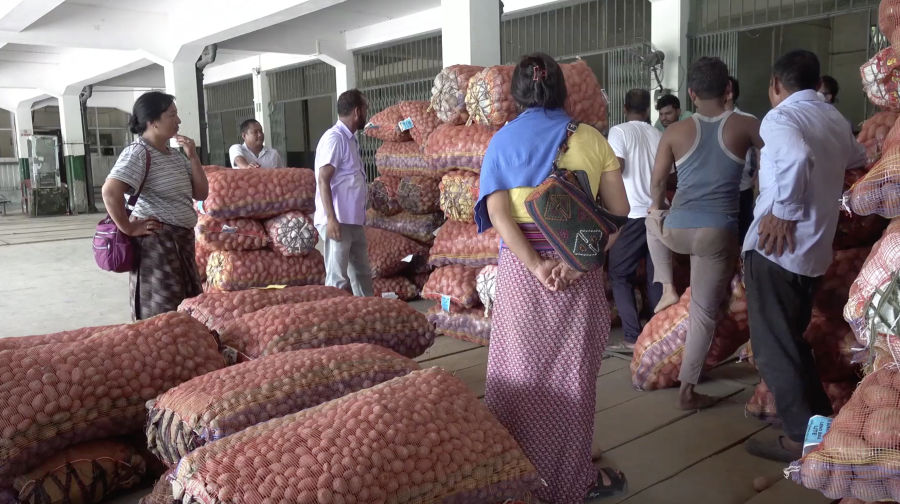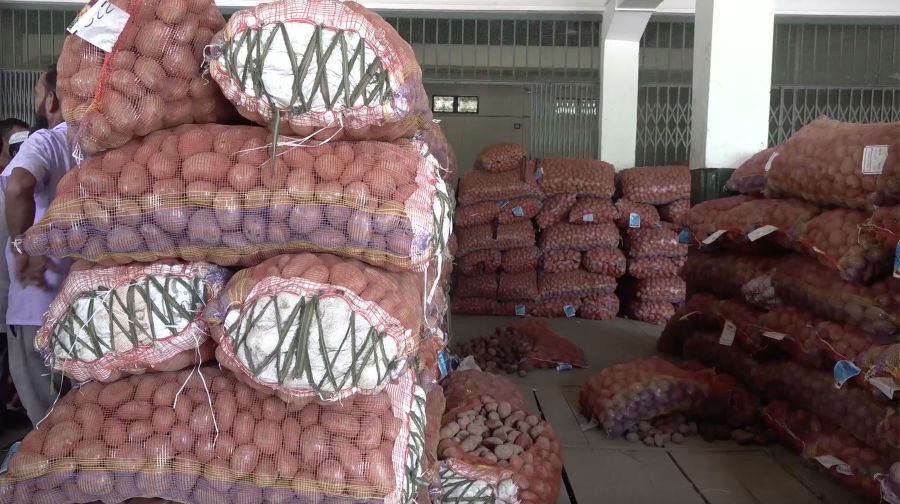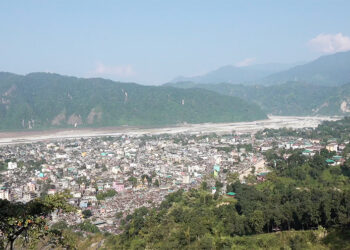 Months of hard work and high hopes have turned into disappointment for potato farmers of eastern districts as prices have dropped compared to last season. Potato growers from the six eastern districts take their produce to sell at the Samdrup Jongkhar auction yard.
Months of hard work and high hopes have turned into disappointment for potato farmers of eastern districts as prices have dropped compared to last season. Potato growers from the six eastern districts take their produce to sell at the Samdrup Jongkhar auction yard.
At the Samdrup Jongkhar auction yard, the current rates for bigger potatoes range from Nu 22 to Nu 23 per kilogram. Around the same time last year, farmers fetched Nu 30 per kilogram.
The fall in price has left many farmers discouraged, with some saying the returns barely cover their transportation and labour costs.
“When prices drop, there is not much we can do. From children’s expenses to running households, we depend on the income from potatoes,” said Tenzin, a potato grower from Trashigang who brought his harvest to sell at the Samdrup Jongkhar auction yard.
Tashi Dargay, another potato grower from Trashigang, said, “We depend on potatoes, and work so hard right from cultivation till harvest. And finally, when it is time to sell the produce, the price drops, discouraging us from doing agricultural work.”
Potato growers say, despite the FCB’s help, the prices have not improved this season. “It would be better if the government and agriculture ministers could find alternatives to sell the produce,” said Wangchuk, a potato farmer from Trashigang.
According to the FCBL’s Regional Director in Samdrup Jongkhar, the price depends on the Indian market, as well as the quality and grading of the potatoes.

“There is a huge production of potatoes in India. We also have cold storage potatoes available in the market for Nu 7 to Nu 9 per kilogram. This has a direct impact on the price of Bhutanese potatoes. There will be better prices here only if the price in India increases,” said Ugyen, the FCBL’s Regional Director.
He added that a price exceeding Nu 20 per kilogram is still profitable for the growers.
Since May, more than 64 truckloads or 640 metric tonnes of potatoes have been exported to India through the Samdrup Jongkhar auction yard. As the auction continues, farmers have a choice to wait and hope for a price improvement or sell now at current rates.
Kinley Wangchuk, Samdrup Jongkhar
Edited by Phub Gyem









